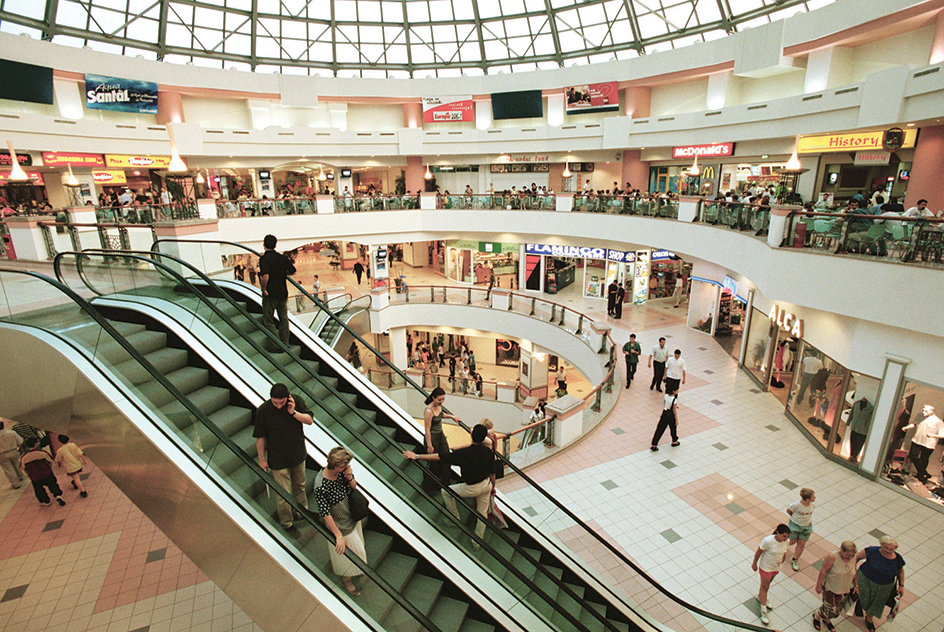Shopping center is a group of retail businesses built close together, with shared parking. This arrangement allows customers to conveniently visit several businesses in one trip. Shopping centers may include clothing stores, fitness centers, gas stations, grocery stores, hair salons, hotels, restaurants, theaters, and such recreational areas as amusement parks and skating rinks.

Shopping centers are usually anchored by key businesses—that is, businesses that attract large numbers of customers are distributed throughout the shopping center. These centers can be arranged in a variety of ways. Malls typically have stores enclosed within an indoor pedestrian area. Strip malls offer a row of stores or offices, each of which has its own outside entrance. Urban shopping centers, often called city centers, are built in architectural styles that resemble city streets. Each establishment has its own entrance.
When building a new shopping center, developers look for sites that are easily reached by customers. Most shopping centers have building codes that require all the businesses in the center to have a similar appearance. Owners are usually responsible for the exterior appearance of a shopping center and for its security and fire protection.
Shopping centers are a modern version of such ancient marketplaces as the Agora of Athens. Many people consider the first modern example to be the Country Club Plaza, built in Kansas City, Missouri, in 1922. The concept of shopping centers did not immediately become popular. Fewer than a dozen shopping centers existed in the United States at the end of World War II in 1945. After the war, however, the idea caught on.
There are now thousands of shopping centers around the world. Some examples of successful shopping centers include the Mall of America in Bloomington, Minnesota; the Easton Town Center in Columbus, Ohio; and the Evropeiski (Russian for European) Mall in Moscow.
